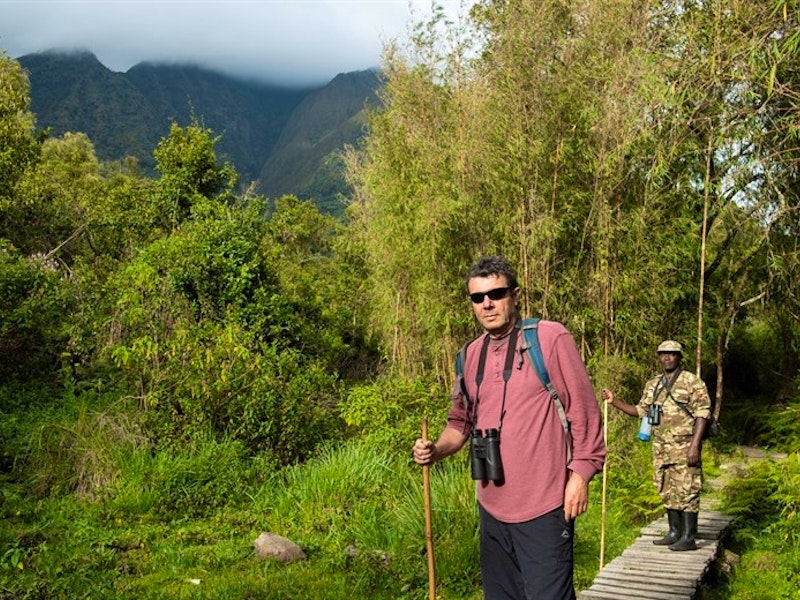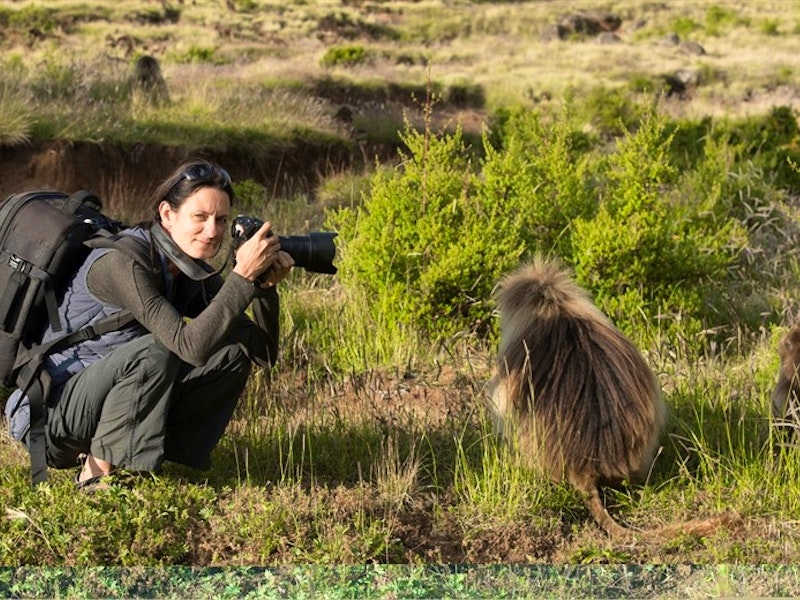
To Africa travel enthusiasts, Philip Briggs needs no introduction. He has written more guidebooks on African countries than any other author, and he along with his photographer wife Ariadne Van Zandbergen, regularly contributes features for magazines such as Travel Africa and many more. Rainbow Tours’ Derek Schuurman recently had the chance to chat with Philip about his colourful career, with emphasis on his favourite country, Ethiopia, for which Philip’s ‘Ethiopia: The Bradt Guide’ – now in its 8th edition - is widely regarded as the ‘bible’ for travellers planning on visiting this iconoclastic destination.


What made you decide to travel to a country as off-beat as Ethiopia?
A: It wasn’t my idea! My long time publisher Hilary Bradt suggested Ethiopia as the subject of a guidebook back in the mid-1990s. Initially, I thought she had gone mad. Like most people back then, I associated Ethiopia with famine, drought, war and other largely negative things – but she sold me on the idea, and I ended up spending four months there researching what is probably my favourite among my guidebooks, which recently went into its 8th edition!

To you, what are the most endearing things about Ethiopia and its people?
Everything about Ethiopia is quirky. It has a very different history to neighbouring countries, and most aspects of the culture – the food, the music, the dancing, the script, the languages – are more-or-less unique. That aspect of the country has perhaps become a bit diluted in recent years but when I first visited in the mid-1990s, it felt a bit like beaming down into some alternative quasi-medieval universe – or, as Dervla Murphy once put it, ‘travelling in Ethiopia gives one the Orlando-like illusion of living through different centuries’.

Have you observed many changes through the years you have been travelling there?
Ethiopia today seems a lot less parochial and downright weird than it did 20 years ago. People are more exposed these days, probably partly due to the internet, but also an increased foreign presence and more liberal government. Tourism has increased hugely too. When I first travelled around Ethiopia, I often went weeks on end without seeing another westerner. When I visited Lalibela, the country’s most popular tourist attraction, I was one of only two tourists in town. That wouldn’t happen today!

Is there a specific type of person you would recommend Ethiopia to as a destination?
You’d need to have a strong interest in culture and historical sites, which are the main attractions, and ideally be the sort of person who likes to read up about somewhere before you travel there. It is also great for wildlife and bird watching, though in quite a specialist way, as its main natural resource is a wealth of endemics as opposed to the plains wildlife associated with other African countries. Although I hate to make the distinction between ‘tourists’ and ‘travellers’, it can sometimes be useful, and I would definitely regard Ethiopia as travel rather than a tourist destination.

Likewise, who should avoid the country?
Anybody expecting five-star luxury, or phobic about things like dirt and insects, or whose idea of a perfect holiday revolves around sipping cocktails on a beach resort.

What have been your all-time highlights in terms of travel experiences there?
A: So much I saw on my first trip there was mind-blowing, not least because I was so unprepared for what to expect. I love the rock-hewn churches of Tigrai for their time-warped, almost Biblical, feel. Bale Mountains National Park, where I saw my first Ethiopian wolf, is another favourite spot. The Simien Mountains for their scenery and herds of gelada (the only grass eating monkey). The Blue Nile Falls in full flow – stunning! I also have fond memories of Harar, a characterful walled Islamic city in the far east, and the remote sweltering river port of Gambella in the western lowlands. Then there’s unique music, the sporadically wonderful food, potty priests & their ubiquitous umbrellas wondering around like extras from Monty Python & the Holy Grail… it really is a country of highlights!

And the lowlights/ bad experiences?
The human aspect of Ethiopia can be challenging. I think it has improved somewhat, but when I first visited, it was almost impossible to have any privacy, or to go anywhere without a trail of kids following and yelling ‘you, you, you’… mostly quite harmless stuff, but enervating all the same. Some of the bus trips back then were also pretty hairy!

How many Africa travel guides have you authored now?
I’ve written at least 15 books for Bradt, most have gone into several editions, and are still in print. I would imagine constitutes some sort of masochistic African guidebook record. I’ve also worked on quite a few books for other publishers like Insight, Eyewitness, AA, Camerapix… most recently an Insight Guide and Berlitz Pocket Guide to Madagascar. Outside of Africa, I’ve written Bradt Guides to Suriname and Sri Lanka, and recently updated their guides to Macedonia and Peloponnese.


What’s it like working on projects with your photographer wife Ariadne Van Zandbergen? Do the two of you do much work independently or is the bulk of it a team effort?
Fortunately we enjoy travelling together. We don’t often collaborate as such, but we work alongside and around each other a lot – while I am researching or updating guidebooks, Ariadne works on her stock photography Africa Image Library.

Which is your favourite African destination?
Too many to list here. But I guess my top five would include the Serengeti-Mara ecosystem for safaris, the Virunga Mountains for gorilla tracking, Ethiopia for full-on whackiness, and South Africa for its variety and affordability.

And which do you still really want to visit?
Several. Top of my wish list would be Morocco and Gabon (to see mandrills). Also lots of places I’d like to visit in Asia and South America.

Any exciting upcoming projects or happenings you want to share with us?
It has been a busy year for my Bradt guides, with new editions of Rwanda, Ethiopia and Somaliland just out, and Ghana and Malawi in [production. I’ve also just wrapped up a fully revamped 9th edition of Uganda, and I’m about to start work on a new edition of Suriname.

Hero image: Aerial view of Gondar including the Imperial Compound and its castles. (Courtesy ETO)




